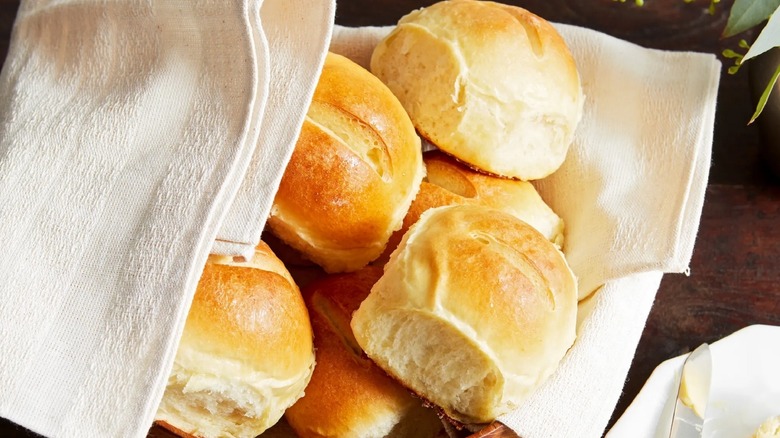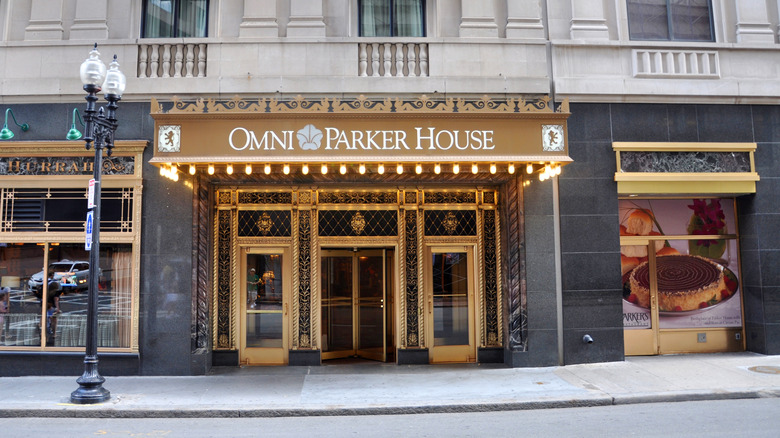The 19th Century Origins Of Parker House Rolls
There is nothing better than tearing open a steaming warm dinner roll after finishing off a good meal. Soft, buttery bread is used to mop up any residual sauces on dinner plates or to dip into flavorful bowls of soup. Americans are particularly fond of all things small, buttery, and bready. We have Southern-style biscuits, traditional fry bread, and, of course, the overwhelmingly popular Parker House Rolls.
Parker House rolls have been a beloved dinner roll gracing dining tables for decades. King Arthur Baking describes them as reminiscent of any fluffy yeast bread except they have a distinct folded shape layered with butter. This not only gives them a unique brand look but also makes them incredibly rich in flavor due to all the fat.
Southern Living says that these rolls are ideal candidates for holiday meals and large gatherings because there will be no leftovers! Everyone will eat them up regardless of whether they are served plain or cut in half and served as mini-sandwiches. They are the ultimate soft, sweet bread of the century, but what inspired someone to create this buttery delight?
Where did they come from?
The rich, folded rolls originated in Boston, Massachusetts during the 1870s, according to Foodicles. They were created at the Parker House Hotel (hence the name Parker House roll), which now goes by the title of the Omni Hotel and is also where the famous Boston cream pie was invented.
Allrecipes reports that light, fluffy bread wasn't all that common before the turn of the 20th century. Bread used to be a tough and fairly crusty baked good until a German baker working at the Parker House worked his magic. The rolls themselves are soft because they are made with oodles of butter and then glazed with more butter after they've finished baking.
But if legends are to be believed, this soft dinner roll may have been more of an accidental miracle than we realized. New England Today claims that the baker credited with the Parker House roll's invention did so after he'd become deeply disturbed by an argument, and he'd become so thoroughly distracted that he'd ended up putting unfinished rolls in the oven to bake which is why they had the distinct fold in their top.

